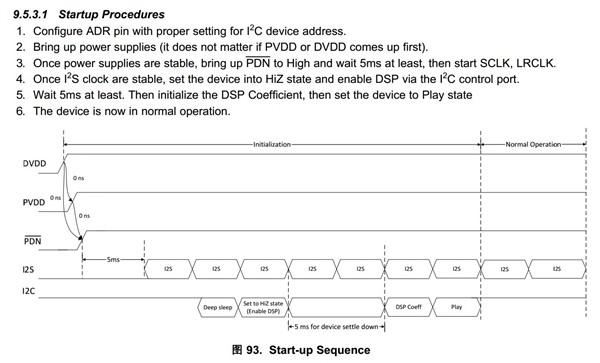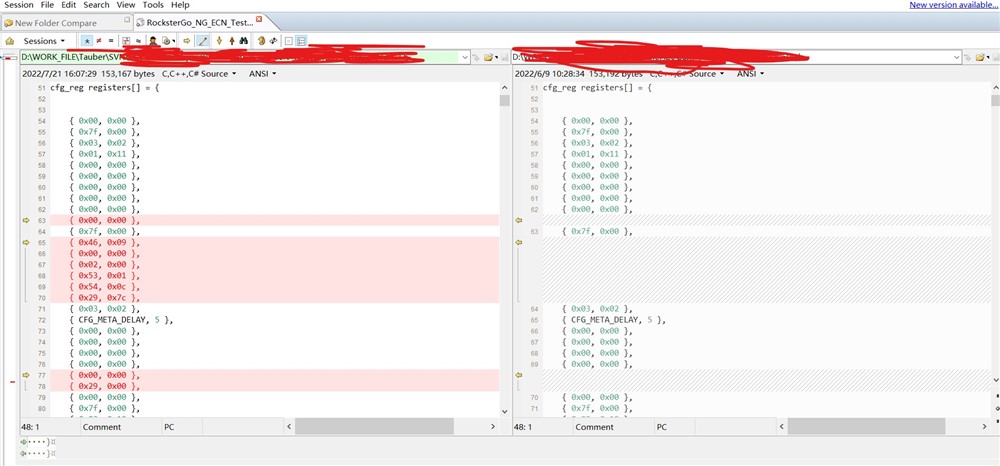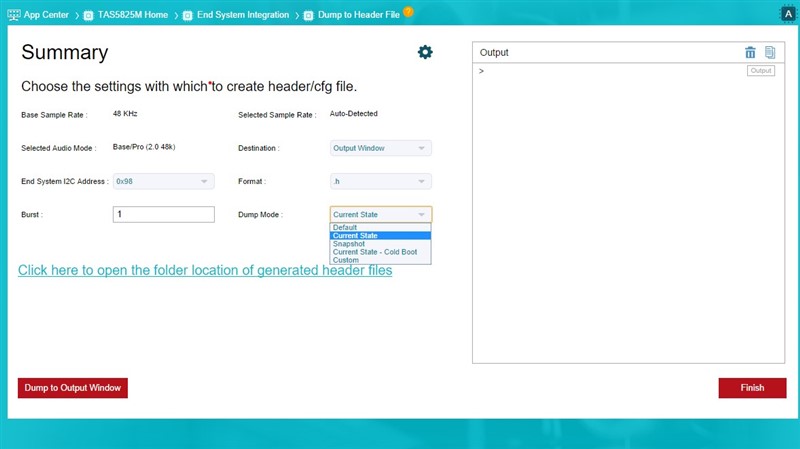Hi, support team
My customer has the questions as follow:
1. If I can't provide the I2S signal before writing the I2C signal, is there a way to properly start the TAS5825M?
2. If the I2S signal must be provided at the start-up sequence, must the I2S signal be continuously provided?
3. What is the difference between the current state-cold boot of ppc3 and the EQ.h generated by default?
Why can the EQ.h file generated by current state-cold boot get the correct AP data but the eq.h generated by default cannot? Can the EQ.h file generated by current state-cold boot be used directly?
figure1:TAS5825M Startup Procedures

figure2:Generate different parts of the EQ file

figure3:Generate different parts of the EQ file

figure4:ppc3

Thanks so much.
Best regards,
Yuki

